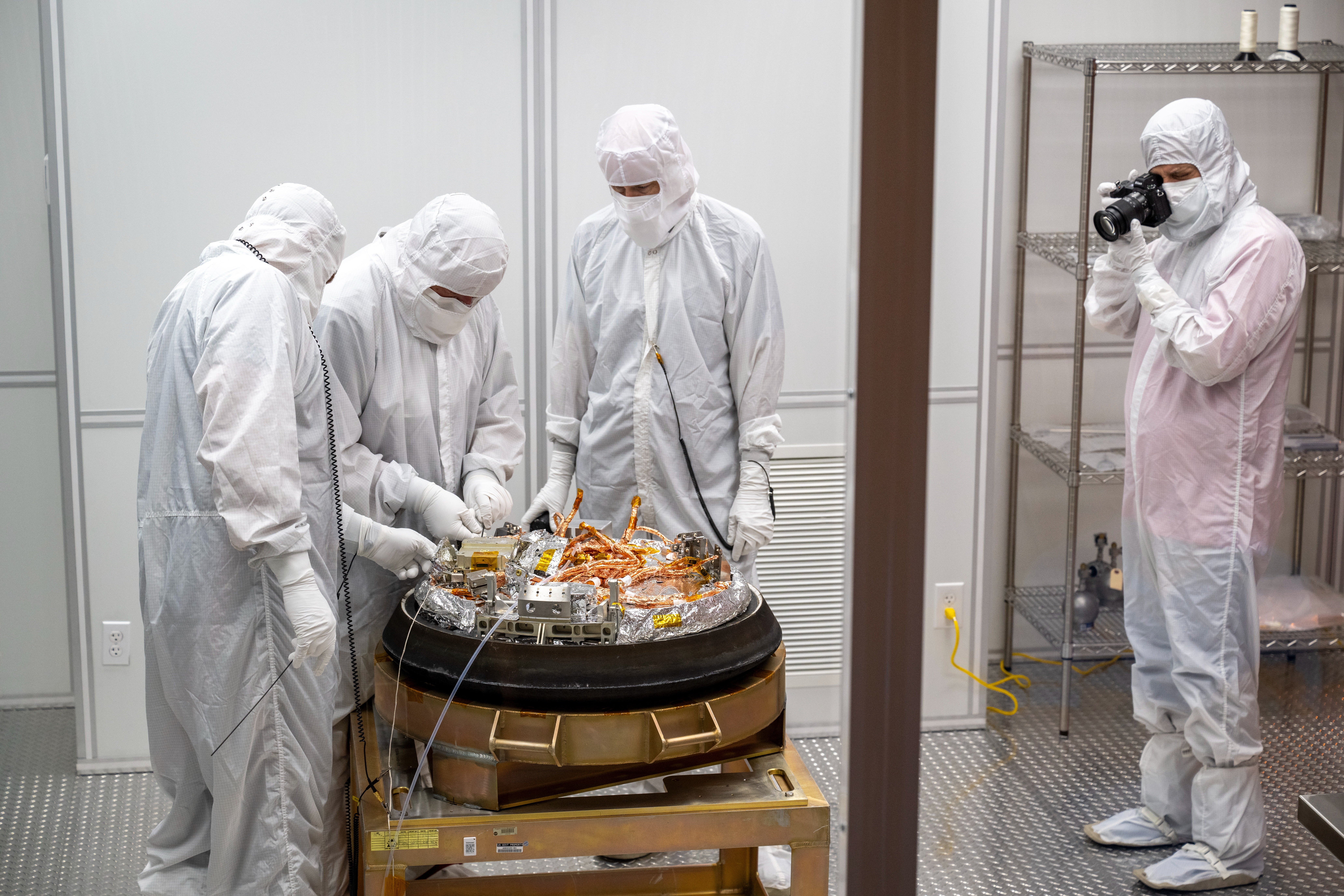
In 1877, when English geologist Henry Clifton Sorby first examined samples of meteorites under a microscope, he saw small, spherical rocks and described them as “drops of fiery rain.” Now known as chondrules, from the ancient Greek chondros, meaning “grain”, they are present in nearly all meteorites and, hence, are thought to be a major part of the building blocks of planets. Yet, the processes that formed them remain enigmatic today.
Today, planetary scientists can study not only rocks that have fallen from the sky — they have begun to look for chondrules in materials directly sampled from asteroids to learn more. Most recently, researchers have started analyzing materials returned from asteroid 101955 Bennu, and presented their initial findings at the Lunar and Planetary Science Conference in The Woodlands, Texas, earlier this year.
So far, researchers have not found anything in Bennu samples that looks exactly like chondrules seen in meteorites. But they have found an array of rocks that resemble chondrules to varying degrees, suggesting that asteroids are more diverse than meteorites might suggest.
Excavating Bennu’s past
In October 2020, NASA’s OSIRIS-REx spacecraft touched down on Bennu and collected a sample of surface material, stowing it in a capsule that the spacecraft returned to the Utah desert Sept. 24, 2023. The next day, the 4.29-ounce (121.6 grams) sample was safely stored at NASA’s Johnson Space Center in Houston.
Although the groups are in the early stages of analysis and have examined less than 1 percent of the sample returned, the results are “still very important findings,” says Harold Connolly Jr., a meteorite expert at Rowan University.
Connolly Jr. led the initial analysis of one of the Bennu samples. This process is akin to what geologists do when they find rocks on Earth and involves documenting the appearance of particles and identifying minerals and possible processes that altered them. Through this work, researchers hope to infer what the sample was like when it formed.
This first analysis showed that Bennu has no definitive chondrules. That finding is in line with Bennu’s mineral evidence, which shows that water once flowed through the asteroid as the ices it contained melted long ago.
“The aqueous alteration would have destroyed the chondrules it may have had,” says Sara Russell, a meteorite researcher at the Natural History Museum in London who led another analysis of a sample.
However, Russell and her team’s results showed that the sample contains grains that could be fragments of chondrules. The group is currently looking at whether the remnants could be from another type of rock that is thought to have formed in the solar system even earlier than chondrules — known as calcium-aluminum-rich-inclusions or CAIs. If not, the fragments would likely be from chondrules that escaped being altered by the water.
In another abstract presented at the conference, a team led by meteorite experts Loan Le and Kathie Thomas-Keprta at the Johnson Space Center found three grains in a millimeter-sized-sample of Bennu that have similar compositions and shapes to a chondrule found in a meteorite that fell over Australia in 1969 called Murchison. Two of the objects in the Bennu sample have indentations, possibly from contact with water that once flowed through asteroid. Thomas-Keprta says the other object’s structure, which resembles bales of hay, has never been observed before in a chondrule, as far as she is aware.
In the coming months, the team plans to slice a 100-nanometer-thin sample of the grains to see if they contain other materials that are commonly found in chondrules.
For now, they are calling the grains chondrule-like-objects.
The diversity of asteroids
If the materials are found to be chondrules, they will show that the population of asteroids in our solar system span a wider variety than indicated by meteorites found on Earth’s surface. And Bennu’s chondrule-like objects suggest that it may be a bit different from any known meteorite, says Russell.
Interestingly, researchers also found chondrule-like objects in the sample brought back from asteroid 162173 Ryugu by Japan’s Hayabusa2 mission in 2020.

“What we are learning from Ryugu and Bennu is that there are lots of asteroids out there that are similar, but don’t exactly match the meteorites in our collections,” says Russell.
As for whether the returned samples have been able to answer the long-standing question of how chondrules formed, Connolly Jr. says, “Not yet.” He adds that discovering how they formed isn’t easy, though further analysis of the Bennu sample and more spacecraft missions to return more materials could help.
“You have to find the right pond and the right fish,” he says.
If scientists can discover how chondrules formed, they would have a better sense of the extent to which they were building blocks of planets. It’s possible that chondrules formed when small grains of dust were heated early on in the solar system and later cooled. If this is the case, then chondrules would have been a large source of the materials that accreted to build asteroids, comets, and planets.
On the other hand, if chondrules could have only formed from collisions between planetesimals that had already been built, then chondrules would not have been necessary to form planets — though they would still stand as evidence that the early solar system was a dynamic, violent place.
It could turn out that chondrules formed in multiple ways, depending on where in the solar system they formed and when.
“Chondrules are so unusual,” says Thomas-Keprta. “They would never have been predicted if they didn’t exist.”









